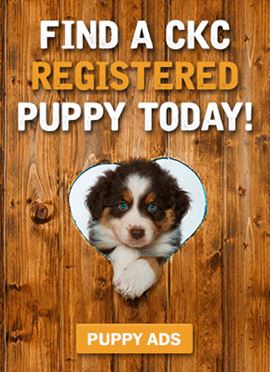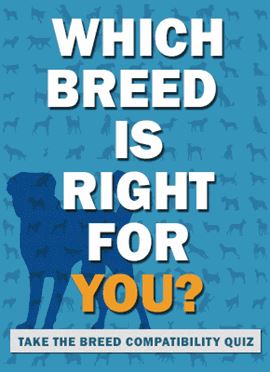
Wolfing It Down: Eating Too Quickly Can Be Fatal for Dogs
While it may seem like a funny little quirk in your dog's behavior, scarfing down dinner in record time can actually be quite hazardous to his health.
If your dog eats his food as though a thief is going to break in at any moment and snatch it away from him, it's definitely a problem that needs to be resolved. Dogs may develop a number of undesirable symptoms after eating too quickly, and while some of the issues produce little more than discomfort, others can be life-threatening. Luckily, there are a number of steps virtually any dog owner can take to protect Fido from this nasty habit.
Why do dogs eat so quickly?
Both environmental and biological factors influence the way a dog eats. For instance, experts believe that a dog's experiences as a puppy, and perhaps even his own biological hardwiring, can push him to eat in a manner that seems competitive, even if there are no other dogs around. This may be the result of chaotic, first-come, first-served situations that the dog experienced as a nursing pup. A puppy that's too slow to get a good spot near his mother when feeding time rolls around will likely find himself with an emptier belly than his faster brothers and sisters. As the dog ages, it's really no wonder why he vies against people, animals, and time itself when snapping up his meals. He’s simply leaning on his developmental experiences. To make matters worse, in many homes with more than one dog, the fast eater's apparent paranoia is actually justified, since gluttonous siblings may finish their own meals only to wander toward his bowl for seconds.
Eating too quickly, overeating, or both may also be symptoms of a medical issue. Habitual overeating can indicate a thyroid disorder, since the thyroid is responsible for regulating hormones that tell the brain to feel hungry or full. Parasites, too, such as tapeworms, can sharply increase a dog’s desire to consume food by stealing vital nutrients from the dog's food and “starving” his body. Additionally, strenuous activity or exercise, both before or after a feeding, can cause mild to severe problems with digestion, and drinking too much water too quickly can have similar negative effects.
How does “fast food” harm your dog?
Although it may seem cute or innocent on the surface, fast eating is a behavior that should be discouraged in dogs, regardless of whether they are puppies or adults. Less severe consequences include burping and the like, which are signs that your dog is suffering from indigestion. When a dog races to the bottom of his food dish, he's also inhaling excessive amounts of air between bites. This action, in turn, causes the dog to become gassy, which is, of course, an outcome best avoided for both your sakes.
Choking is one of the more serious issues associated with speed eating. A dog may rush over to his bowl with the idea of finishing all his food before it's had a chance to disappear, but in wolfing down his kibble or treats, he may bite off more than he can chew. When a dog eats without properly chewing, chunks of food or treats can lodge in the dog's esophagus, causing serious breathing problems. (If a dog is choking, carefully open his mouth and try to remove the food. If the dog is unconscious, gently pull his tongue forward to dislodge the obstruction from his throat. And always seek medical care in cases of emergency.)
One of the most severe eating issues is gas bloat. Although it sounds innocuous, gas bloat can quickly lead to a potentially fatal condition known as gastric dilatation volvulus, or GDV. The problem starts out in much the same way as indigestion—a dog consumes too much air due to fast eating, creating gas buildup within the body—but the results can be devastating and permanent. When GDV occurs, the stomach lining expands to an abnormally large size (dilatation), and the expansion causes the stomach to twist within the dog's body (volvulus). As the stomach turns, blood flow is cut off, which can often be permanently debilitating or even fatal. Signs that a dog is suffering from GDV include failed vomiting attempts, a swollen abdomen, pale gums, a low temperature, panting, a rapid heartbeat, and the inability to stand. GDV happens quickly and there is no home remedy. Dogs suffering GDV need immediate medical attention, since treatment involves surgery. Large and deep-chested breeds, such as German shorthaired pointers, Old English sheepdogs, Doberman pinschers, Weimaraners, St. Bernards, Newfoundlands, basset hounds, Irish setters, and Great Danes are especially at risk for bloat and GDV. However, the good news is that making a few small changes to your dog’s eating habits can go a long way toward protecting him from this incredibly dangerous condition.
What can you do to stop it?
Slow your high-speed eater down with a few simple tricks.
- Feed his brain…and his stomach. A variety of products on the market today are designed to promote better feeding habits through mental and physical stimulation. The Foobler by L'Chic Pet Care Solutions, for example, allows owners to insert their dogs' food into time-released compartments inside a toy, keeping dogs engaged while feeding them in controlled portions. Another example, the Busy Buddy Twist ’N Treat, lets owners insert a dog's kibble into the center of the toy and adjust the tightness for a slower release.
- Bowl for bites. If you have a smaller dish that can fit inside the dog's food bowl, place it upside down in the bowl’s center and pour the food around it. The second bowl will become an obstacle, forcing your dog to slow down. Similarly, a large stone can be used instead of a second dish, but make sure that the stone is too large for your dog to swallow before trying it out. Placing an object in the middle of the food dish will prevent your dog from breaking the sound barrier when digging in and make him work a little harder to get every morsel.
- Reservation for one, please. If your dog sees another dog as competition for food, he may react by eating what's in his bowl before anyone else gets the chance. In this case, an out of sight, out of mind approach may be all your dog needs to relax and enjoy his meals. Keep in mind, your dog likely came from a puppy hood in which last place meant less lunch, so your speed eater should probably be moved away from other dogs during dinner.
- Up-cycle an old muffin pan into a slo-mo feeder. This simple feeding solution is cheap, easy, and effective. Dividing your dog’s regular meal between the muffin holes will slow down his eating, which in turn means a happier, healthier dog. If you have a larger, deep-chested dog and an underused muffin pan lying around the house, it's definitely worth a shot.












